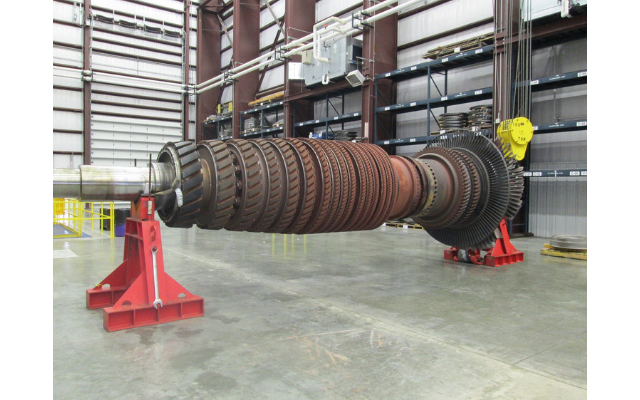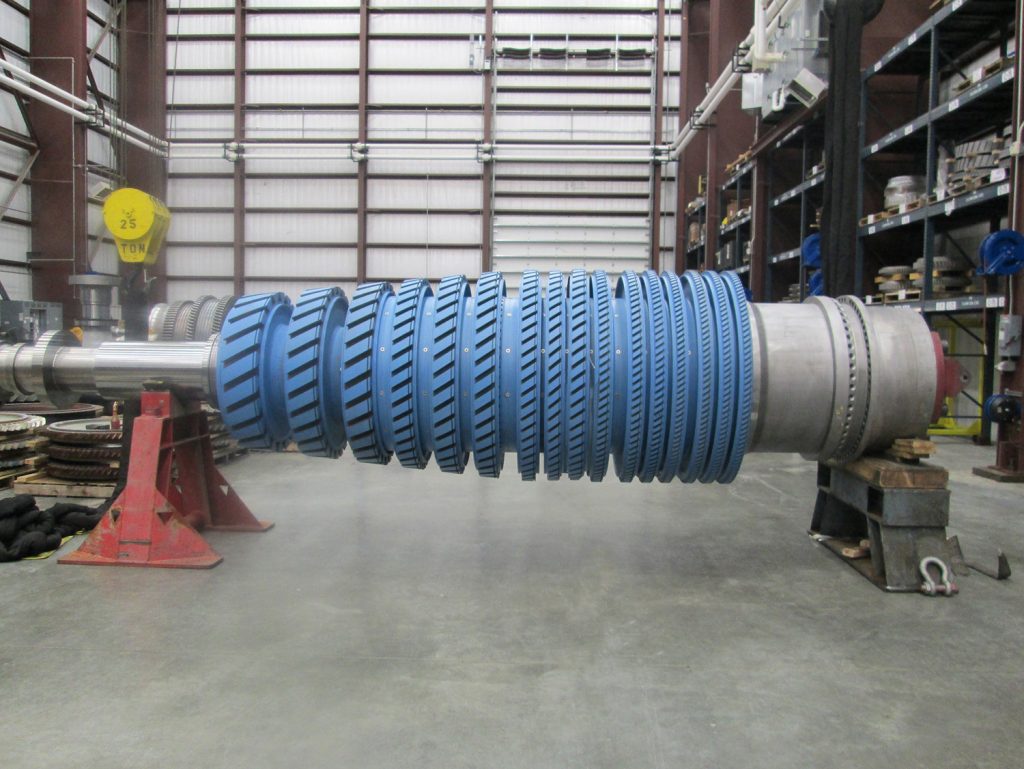Contributor: Sulzer
Gas turbines are employed around the world to provide power. As vital pieces of equipment, they require regular maintenance to provide continued reliability and performance and this needs to be both managed and delivered efficiently. Sulzer has developed its expertise and specialist facilities over many years to offer an independent service for the 501F.
Developed as a joint venture between Westinghouse and Mitsubishi Heavy Industries and first introduced in the early 1990s, the 501F gas turbine has become an extremely popular option for power generation applications worldwide. While most users of the turbine look to their original equipment manufacturer (OEM) for overhaul and maintenance support during the early part of a unit’s life, a growing number are turning to specialist independent providers to deliver these services, especially as their assets get older.
Over the years, Sulzer has gained considerable experience working with the 501F in all its variants. That experience has provided an in-depth understanding of the issues that can affect the turbine in service, and has led to the development of a number of bespoke solutions and capabilities to address those issues, improving the overall reliability of the unit.
The size and weight of a large turbine like the 501F places particular demands on any maintenance provider. Disassembly, inspection, repair, balancing and reassembly operations all require large and highly specialized equipment. To accommodate these requirements, Sulzer has invested in two dedicated 25’000 ft2 (2’400 m2) large turbine overhaul facilities. Equipped with a 100-ton capacity crane with 50 ft (15 m) of space under the hook, these facilities also use a vertical pit and scissor lift for rotor stacking and unstacking operations, together with a 180’000 lb (81 tons) capacity balancing machine and a horizontal lathe with a 198’000 lb (90 tons) capacity.
The overhaul work scope on a machine as large and complex as the 501F is determined by the customer’s requirements and the operating history of the equipment. Typically, a service will begin with disassembly and inspection of the full rotor unit followed by cleaning, non-destructive testing (NDT) and life-cycle assessment.
When issues are identified during turbine operation or the inspection process, significant engineering work is often required to identify and implement a robust, cost-effective solution. For example, one machine was shut down and brought to a Sulzer service center after it exhibited significant vibration. Inspection revealed high radial run-out of up to 0.18 inches (0.46 cm). Upon disassembly, it was found that the register fit on the forward stub had broken off completely.
To avoid replacing the wheel, Sulzer devised a repair strategy using a specially machined bushing. After engineering analysis to determine the approach that would minimize overall stresses, the wheel was machined to accept the new bushing with an interference fit. Once in place, the bushing was machined to the correct final size to mate with the adjacent wheel.
Another common issue in the 501F is wear or failure of the anti-rotation tabs that hold the air baffles in place. The failures cause the baffles to fret, wear or even break away completely, resulting in severe damage to the turbine. To avoid repetition of this issue, Sulzer manufactures air baffles with larger, more robust anti-rotation features, and can modify the anti-rotation slots on the turbine to accommodate them. This work can be carried out with the rotor disassembled, or with a different baffle design, that can be installed in the field.
In cases of failure at the forward end of the compressor through-bolt on the 501F, severe damage can occur to the machine caused by the passage of the liberated fastener. Analysis of the failed parts suggests that the issue is most likely the result of loading on the last full thread of the fastener, combined with insufficient loaded surface area between the fastener and hub to mitigate movement. This allows a crack at the end of the bolt to propagate during operation.
To prevent recurrence of this issue, Sulzer has developed an improved forward compressor nut that is recessed into a close-clearance hole in the wheel. The first complete thread occurs inside of the redesigned nut, and the modification significantly increases the contact surface between the nut and the wheel. The new solution has been extensively tested and validated using finite element analysis and Sulzer now recommends that this upgrade is performed on all turbines that are being overhauled.
Sulzer has extensive capabilities in the manufacture of replacement vanes and blades for gas and steam turbines of all types. It also regularly undertakes root-cause analyses to determine the underlying causes for premature component failure in service. In the 501F, a frequent cause of vane failure stems from problems with the flow of cooling air. This can result in the loss of the necessary air dam at the leading edge of the vane, or insufficient flow through the pin hole channels leading to the trailing edge.
For vanes that have been damaged in this, and other, ways, Sulzer has developed several advanced repair processes that can provide significant economic benefits for users. Rather than replacing the entire vane, the “coupon” repair process allows the damaged area of the vane to be cut away and a new section brazed into place. After grinding, testing and surface treatment, cooling holes are cut into the replacement parts and the vane is returned to service.
Elsewhere, where inspection reveals that highly contoured parts of a vane have become too thin for continued use, a slump brazing process can be used to add additional material. This process extends the service life of the vanes and offers a cost-effective repair with minimal downtime.
For more comprehensive rebuilds, Sulzer can manufacture new W501F rotor blade sets, with stages 1-12 produced from forgings and 13-16 manufactured from compressor blade quality material. Customers can specify FD3 and FOD (foreign object damage) resistant variations as required.
Beyond the repair process, Sulzer offers an advanced coating service which provides both corrosion protection and thermal barrier coatings for gas turbine components. Essential for a prolonged service life, protective coatings need to be carefully applied with state-of-the-art equipment, by experienced operators. This service is supported by years of research in coating technology which has been led by Sulzer.
Ultimately, operators of gas turbines, and their insurers, are concerned about the life expectancy of their rotors. It is widely accepted by user groups, independent consultants and OEMs that the best policy is to thoroughly inspect components, evaluate the risks and to implement mitigation measures. Sulzer offers a complete assessment and repair solution, all under one roof, that can extend rotor service life and minimize downtime.







